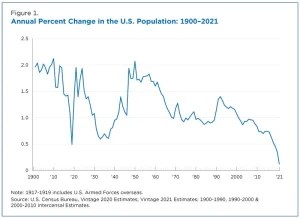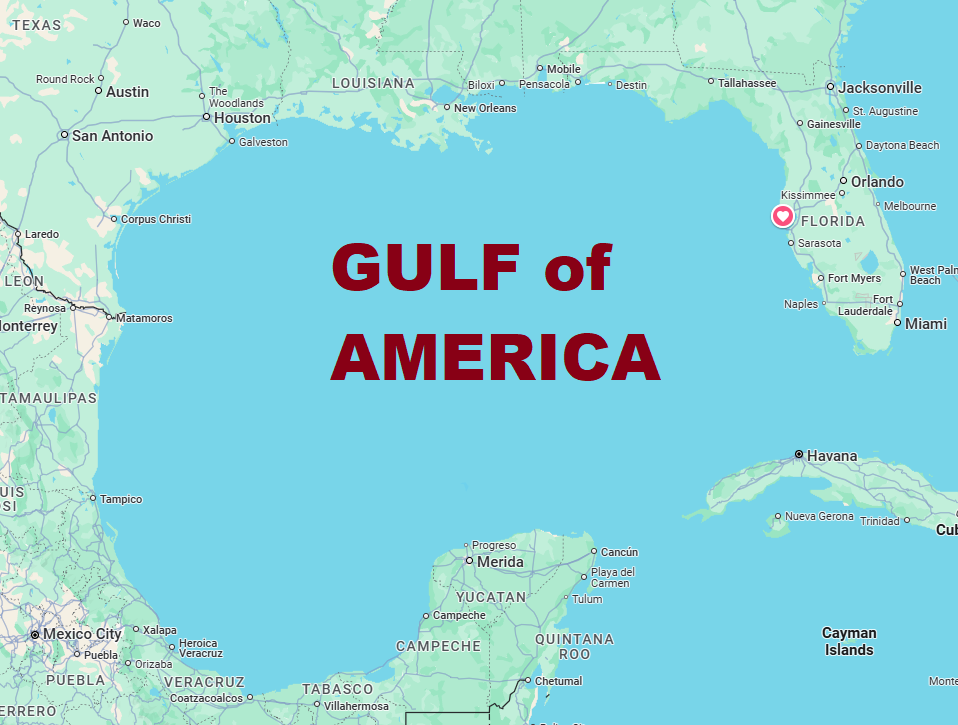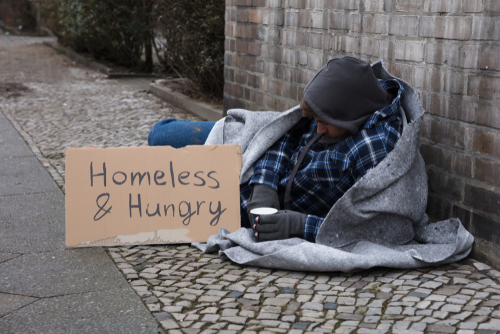The US Census Bureau stated that the US population grew by a mere 0.1% (392,665) in 2021, marking the lowest rate of growth in US history. This is the first time since 1937 that the nation grew by fewer than one million people. The US has not experienced such low levels of growth since 1918-1919, when both the Spanish Flu and World War I were unwinding.
Noting the chart above, the population began to plummet in the mid-2010s. This is a result of decreased fertility and migration as well as an aging population. The COVID pandemic only contributed to a declining population, but the trend was already in motion. Part of the problem is cultural as well. Over half of Millennials witnessed their parents divorce. Women have increased options for employment and career motivations, often opting to have fewer children. There is also a school of thought that it is unethical to have children, as certain US politicians have mentioned in the past.
The biggest issue and cause of population decline comes down to finances. Home prices are at historical highs. Putting the real estate bubble aside, the USDA released a report entitled “The Cost of Raising a Child” that is based on historical prices from 1960 to 2015. The report found that parents could expect to pay $233,610 on raising a child from birth to the age of 17. Factoring in inflation, the cost is over $273,952.64 today.
However, children typically do not leave home at 17, again due to finances. Americans are saddled with student loan debt, and a 2019 poll indicated that over 30% of Millennials expected to move back in with their parents after college. That was an optimistic guess as the Pew Research Center found that 52% of young adults were still living with their parents as of September 2020. Part of it is due to the pandemic, but in February 2020, 47% of young adults were still living at home. The figure has not been seen since the Great Depression when 48% of young adults reported living with their parents.
On an annual basis, the USDA estimates that middle-class Americans will spend $12,980 per year per child, which roughly translates to $15,221.55 today. Of course, this figure does not account for unexpected expenses, as any parent knows are inevitable. Simply put, young adults can no longer afford to have children.










